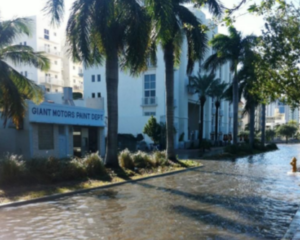A new model to insure risk

Miami Beach flooding, October 29, 2012. Courtesy City of Miami Beach
So once we’re using the best data and analytics, more accurate insurance pricing based on better risk assessment should result. But how do we close the persistent disaster protection gap and help individuals and communities get sufficient insurance coverage? One approach is community-based catastrophe insurance (CBCI). Guy Carpenter, Marsh & McLennan Advantage, and the Wharton School have teamed up to provide a roadmap to help communities become aware of and consider implementing a CBCI.
In their report, Community-Based Catastrophe Insurance: A Model for Closing the Disaster Protection Gap, the team outlines the questions communities should consider and shares a five-part process to help. The process involves defining the need, determining authority to act, engaging stakeholders, analyzing risk, and transferring risk. Options around each of the five steps are outlined in the report.
Once community officials, staff, or residents are interested in further considering CBCI, this five-part process can guide them as they consider possible implementation. The report notes that these are not necessarily sequential steps – it may be necessary to go back and forth among them multiple times. Before arriving at the decision to pursue these steps, the community may need a local champion or leader who believes CBCI could secure local benefits.
As you read through the report, you will see that closing the disaster protection gap will require innovation. CBCI is a new model for disaster coverage and has the potential to be an important tool for improving community resilience to disaster events – and ultimately faster and stronger recoveries.
LMA Newsletter of 3-22-21

